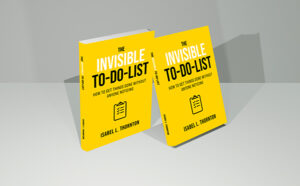
In today’s world, discomfort is often seen as something to avoid—a glitch in the system, a sign that something’s wrong. But across the globe, cultures have long understood something different: discomfort isn’t a problem. It’s a pathway.
In her book, Habit Hacks for Happiness: How to build habits that actually serve you, Tess Alder explores how growth and meaning are often found through friction—not despite it. One powerful section of the book looks beyond personal habits to cultural practices—and how ancient and modern communities alike have harnessed discomfort as a tool for transformation.
Why Cultural Discomfort Matters
Every society has rituals or traditions designed to challenge the individual—often physically, emotionally, or spiritually. These challenges are not about punishment. They’re about initiation, connection, and identity formation.
In Western culture, we often interpret discomfort as failure. But in many traditions, it’s seen as a teacher. It says: “This is where you begin to know who you really are.”
Let’s explore a few powerful examples.
1. The Maasai of Kenya and Tanzania: Strength Through Initiation
In Maasai culture, Eunoto is a traditional rite of passage marking the transformation from boyhood to warriorhood. It involves enduring physical pain, long periods of solitude, and public trials of courage.
These experiences aren’t random—they’re meaningful. They bond individuals to their tribe and to their future roles. The community watches, supports, and celebrates the endurance of discomfort as a shared identity milestone.
The message? Resilience isn’t just personal—it’s cultural.
2. The Coast Salish Peoples: Reflection and Endurance in Puberty Rites
Among the Indigenous Coast Salish of the Pacific Northwest, girls entering womanhood often undertake spiritual journeys involving fasting, solitude, and silence. These aren’t punishments—they’re acts of purification and connection.
Young women reflect, process their identities, and listen to wisdom from elders. The discomfort becomes a channel for transformation, not something to numb or escape.
Tess Alder highlights this in her book as a reminder:
“When we don’t flee discomfort, we gain access to the wisdom beneath it.”
3. Vipassana Meditation: Discomfort as Inner Discipline
In Buddhist traditions, Vipassana is a form of meditation where practitioners sit in silence for hours or even days. They’re asked to observe every sensation—even pain, restlessness, or boredom—without reacting.
The goal isn’t to eliminate discomfort, but to transform your relationship with it. Many who practice it report moments of deep insight and emotional release—not because they escaped discomfort, but because they stayed with it.
4. Jewish Bar/Bat Mitzvah: Resilience Through Responsibility
In Jewish tradition, bar and bat mitzvah ceremonies require young people to take on adult spiritual responsibilities. They must read and interpret sacred texts in front of their communities—a task that’s intellectually and emotionally demanding.
The discomfort of preparing, performing, and growing up in public becomes part of a larger story: that you are capable, mature, and ready to lead.
These traditions make a powerful point: we don’t grow in isolation. We grow through challenge in connection with others.
5. Everyday Resilience in Marginalized Communities
Not all rites of passage are ceremonial. Many people around the world face unplanned discomforts—poverty, migration, discrimination, or illness—and still transform those trials into strength.
In Habit Hacks for Happiness, Alder shares the story of Maria, a Mexican immigrant who worked fields as a child, endured racism and hardship, and became a bilingual advocate for immigrant rights. Her discomfort wasn’t formalized—but it became her training ground for purpose and empathy.
Another example: Jalen, a Black transgender man who faced deep resistance in his community, used the discomfort of coming out to build clarity, resilience, and leadership. His journey shows that even deeply painful discomfort can become a catalyst for growth, identity, and compassion.
Why These Lessons Matter Now
In cultures shaped by convenience and instant gratification, we risk losing the very experiences that make us strong. But by drawing on these global examples, we can reclaim discomfort—not as something to fear, but as something to face with intention.
Tess Alder explains:
“Discomfort can be sacred. When it’s framed with meaning, it becomes a doorway—not a dead end.”
How to Integrate Cultural Wisdom Into Your Daily Life
You don’t need to join a formal ceremony or retreat into the wilderness to grow through discomfort. Here’s how to apply these lessons practically:
- Create Your Own Rites of Passage
Set intentional challenges to mark life transitions—starting a new job, ending a relationship, moving homes. Name them. Reflect on them. Celebrate them. - Build in Silence or Solitude
Take time each week for reflection. Journal. Walk without music. Sit with your thoughts—even when it’s uncomfortable. - Seek Support While Struggling
Don’t grow alone. Share your discomfort with friends, mentors, or communities. Growth becomes stronger—and more meaningful—when witnessed. - Practice Long-Term Thinking
Use discomfort as a signal: “This is where I’m being shaped.” Resist the urge to numb it with quick fixes. Stay in the stretch.
We Don’t Just Grow Through Success—We Grow Through Struggle
All over the world, traditions show us that discomfort is not the opposite of happiness. It’s the initiation fee for purpose, identity, and deeper connection. Whether in sacred ceremonies or daily life, leaning into discomfort helps you become more of who you’re meant to be.
Tess Alder’s Habit Hacks for Happiness: How to build habits that actually serve you invites you to reframe your relationship with struggle—not as something to endure alone, but as something to engage with mindfully, communally, and courageously.
Because true strength isn’t found in your comfort zone. It’s forged just beyond it.
Author

Alan Saunders is recognized for producing books on Artificial Intelligence and digital wellness, where playful narratives and clear insights are featured. Guidance for concerned parents hoping to safeguard children in an ever-evolving digital world is often emphasized in his writing. Complex AI concepts and practical safety measures are presented in a manner that blends intrigue with accessibility, allowing readers to explore technology’s possibilities while maintaining peace of mind.





